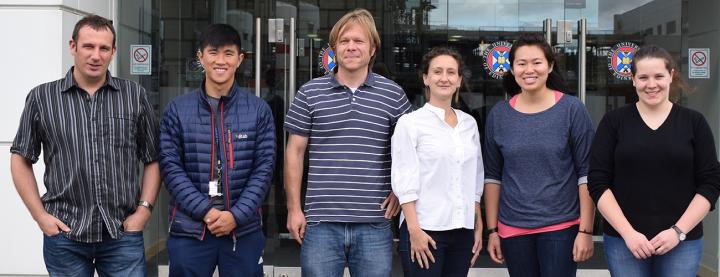Dirk Sieger
In Vivo Studies of Microglia-glioma Interactions

Research in a Nutshell
Glioblastoma is the most aggressive malignant brain tumour that cannot be cured by currently available standard therapies. Glioblastomas are recognized by the immune system and subsequently populated by the residential immune cells of the brain, the microglia. Usually microglia survey the brain and react immediately to any abnormalities to protect our brain. Unfortunately, during glioblastoma growth they fail to do so and seem to support tumour growth instead. The reasons for this disastrous behaviour are not fully understood. Importantly, new studies reveal that microglia can be manipulated within the tumour leading to an anti-tumoural activity of these cells.
We aim to understand how microglia are controlled within the tumour environment and intend to identify the underlying molecular mechanisms. This is the necessary first step in the development of new therapeutic strategies to activate these immune cells to fight the tumour.

People |
|
| Dirk Sieger | Principal Investigator, holder of CRUK Career Establishment Award and UoE Chancellor’s Fellow |
| Katy Astell | Research Assistant-Lab Manager |
| Julie Mazzolini | Postdoctoral Researcher |
| Kelda Chia | PhD student |
| Lloyd Hamilton | PhD student |
| Gregoire Morisse | Research Technician |
Contact
Collaborations
- Dr Marina Mione, University of Trento, Italy
- Dr Steven Pollard, University of Edinburgh, UK
- Dr Paul Brennan, University of Edinburgh, UK
- Dr Asier Unciti-Broceta, University of Edinburgh, UK
- Prof Catherina Becker, University of Edinburgh, UK
- Prof David Lyons, University of Edinburgh, UK
Partners and Funders
- Cancer Research UK
- Royal Society
- MS Society
Scientific Themes
Brain tumour, Glioblastoma, Microgli, Zebrafish
Technology Expertise
Confocal microscopy, Live imaging, Image processing, Zebrafish genetics, Xenografts

